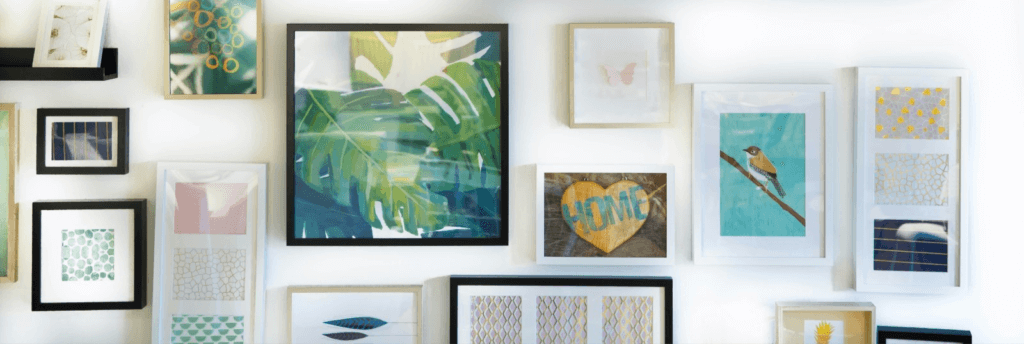What color are your office walls?
Though it might seem arbitrary, the hue you see all day long could have a huge impact on your creative ideas and productivity levels.
Among the stack of technology, devices, and tools at your disposal, color is one that often goes overlooked. It’s powerful and just waiting to be harnessed.
To get the full benefits from the colors you choose to incorporate in your environment, it’s important to understand the theories and research behind color psychology – and why colors that work for one person might not be right for everyone.
The Psychology of Color
How colors affect a person’s moods, feelings, and behavior is studied in a field of science called color psychology.
In color psychology, there are a few main colors that most studies focus on. Color psychologist Angela Wright writes that there are four primary psychological colors: red, blue, yellow, and green – all of which have unique benefits and influences on mood and behavior. All other colors and their associated effects are combinations of those four.
According to Wright, the effects of these colors are as follows:
- Red – Physical stimulation and productivity.
- Blue – Intellectual concentration and soothing feelings of focus and calm.
- Yellow – Emotional energy.
- Green – Balance and calm.
It’s generally accepted among researchers that warmer colors can evoke feelings of stimulation, while cooler colors can elicit feelings of calm.
One theory posits that the somewhat universal associations to warm vs cool colors may have to do with wavelengths. The idea is that the longer wavelengths that form warm colors such as red and yellow trigger feelings of excitement, while shorter wavelengths that create cooler colors like blue and violet cause feelings of relaxation. The effects of colors may also be related to the intensity or saturation (i.e.: stronger and darker to stimulate, lighter to soothe).

Seeing Red (and Blue): The Subjective Nature of Color Psychology
The emotions that a certain color evokes may change from person to person based on a range of factors such as experiences, associations, and cultural or situational context.
Let’s take the color red, for instance.
In some scenarios, red can stimulate feelings of energy and excitement, increasing productivity. It’s influence (which some studies connect to our primate biology) has shown to speed up visual search times, boost attention to detail, and increase alertness.
A UBC study that tracked the productivity of 600 participants and found that compared to blue, red was 31% more effective in helping with detail-oriented tasks. That’s probably why people will often markup with red during an online proofing process.
Whether red makes you more productive or not also hinges on cultural context. The author of the above study, Juliet Zhu, states that the unconscious influences of color on cognition and behavior are through learned associations. Because of cultural symbols like stop signs, fire trucks, and emergency signs, we associate red with danger and caution. Zhu states: “The avoidance motivation, or heightened state, that red activates makes us vigilant and thus helps us perform tasks where careful attention is required to produce a right or wrong answer.”
The nature of the task can also alter these influences. For example, a different study found that students presented with a red number indicating their order placement in the exam room before taking a test scored 20% lower than students presented with a black or green number.
Now, what about blue?
The UBC study found that blue was best for creative thinking, tracking that it was most effective for brainstorming and creative output when compared to red.
Zhu says that like red, the effect of blue is strongly linked to association: “Through associations with the sky, the ocean and water, most people associate blue with openness, peace, and tranquility.”

Creating a Balanced Workspace With Color
Whether there’s an exact science behind the colors you choose to put in your workspace or not, environment influences the way we work. Getting the right balance for your personal flow is key.
Though warm colors can stimulate motivation and cool colors can increase a sense of calm, too much of one or the other is not great. Seeing too much red could increase irritation, while too much blue could have you feeling… well, blue.
Whether you want to get the creative juices flowing or find some deeper focus in your work, these colors might help:
How Color Can Boost Creativity
- Blue – Has been linked to better creative output and can be useful during brainstorming sessions, and for inspiring creative ideas.
- Red – Thanks to its potential influence on alertness, red has been shown to help with enhancing attention to detail.
- Yellow – A study found that 52% of people link yellow to joy. Stuck in a rut? Yellow can get the creativity flowing.
- Purple – Linked to feelings of confidence, purple could enhance innovative ideas and decision-making capabilities in the creative process.
How Color Can Increase Productivity
- Red – Could help you feel energized and motivated to get things done. It can even help to drive that competitive edge!
- Blue – Can help you stay on task with better concentration and focus. Blue’s link to feelings of tranquility can positively affect workplaces where employees perform technical tasks.
- Orange – Used in color therapy, the color orange is thought to help boost energy levels.
- Green – Our contextual connections to nature link green to feelings of relaxation, contentment, and satisfaction. Green is great for when you’re feeling overwhelmed by tasks.
Ideas for Incorporating Color Psychology in Your Work and Workspace
Though your workspace is unlikely to be completely devoid of color as you read this, a refresh never hurts. And being intentional about the way you incorporate color into your space and daily activities could have an impact on your output.
In fact, using color to “prime” your brain for certain types of work may help increase productivity and creativity.
Depending on your creative or productivity goals, here are a few ways you can incorporate color psychology into your work and physical space and benefit from their influences.
- Hang a painting with colors that encourage your goals.
- Use colored pens while proofing – or even better, colored markups when using online proofing.
- Highlight key calendar events using colors that evoke the feeling or mood you want to convey.
- Choose thoughtfully when you add plants or flowers to your desk – does the color make you feel motivated and happy?
- Change up your computer desktop background or screen saver with colors that motivate you.

Yellow or Green? Red or Blue? It’s Up to You
What color makes you more creative and boosts brain performance? Depending on the task, your goals, and your personal associations, the answer will vary.
Though associations to warm vs cool colors are generally universal, the saturation, situational context, and even your past experiences can all influence how the colors affect your mood. And colors can have negative or positive effects, depending on the context they’re being experienced in.
If you planned on painting your office walls bright red or midnight blue, you may want to put some thought into which colors affect your mood in a positive way – keeping in mind that those associations can change based on what you’re working on! So before rushing out for a paint roller and ladder, maybe try a different color desktop background first.






